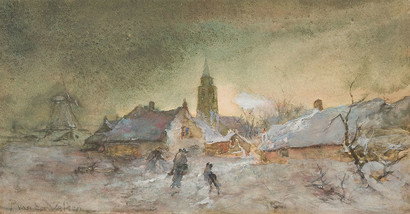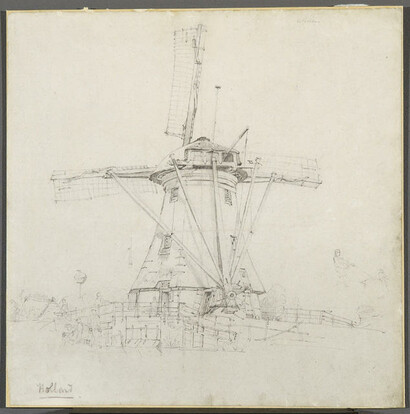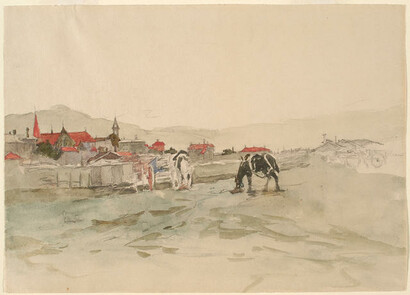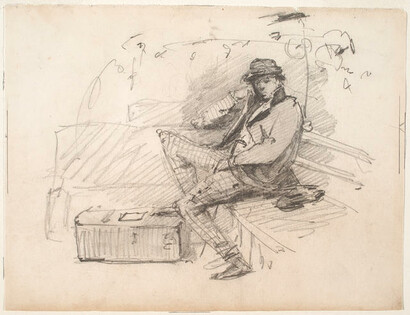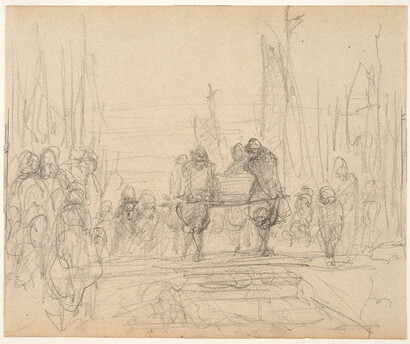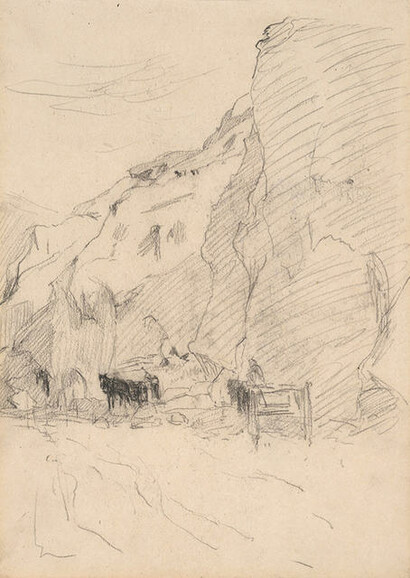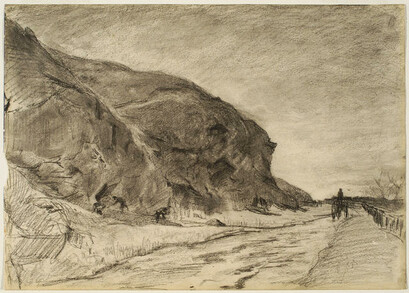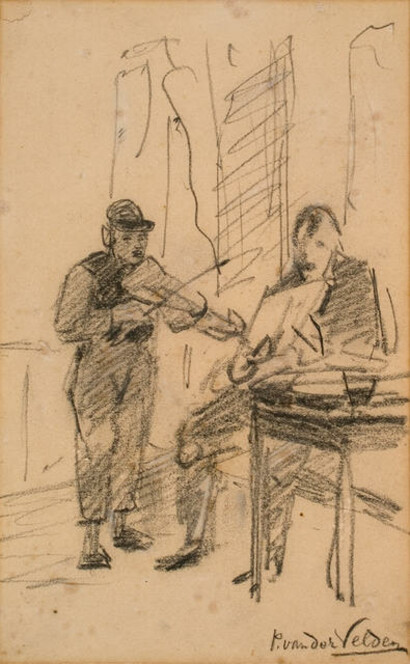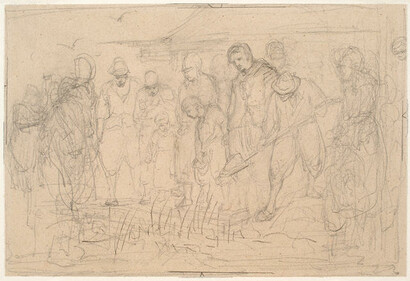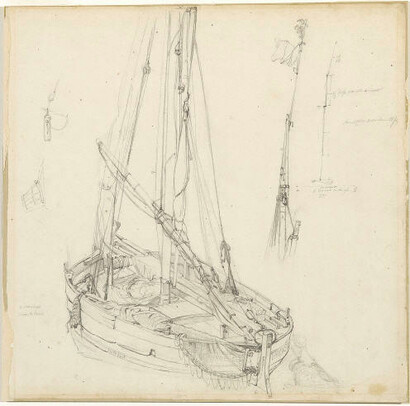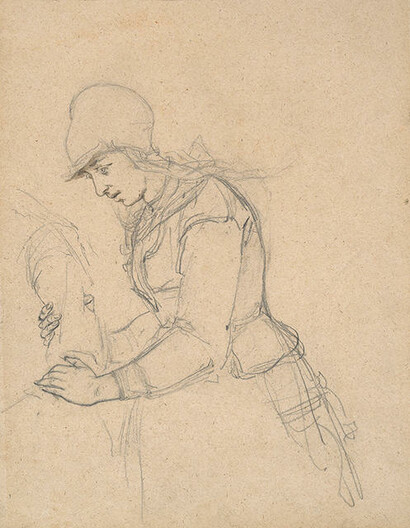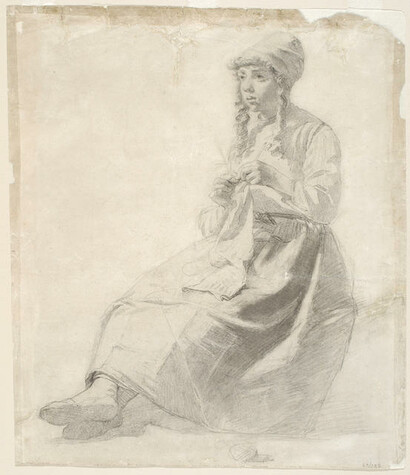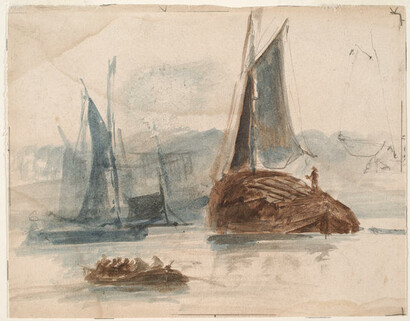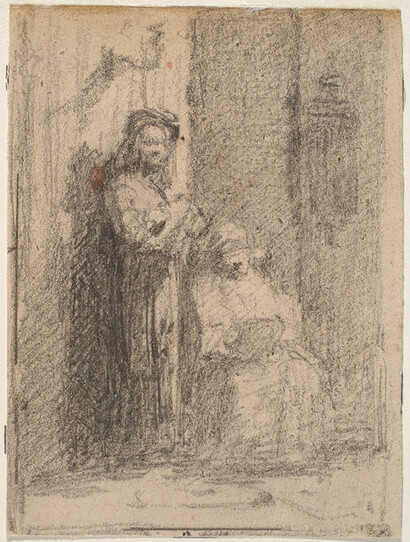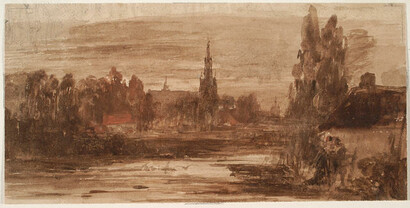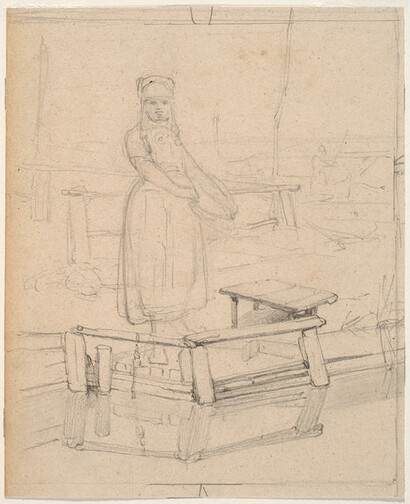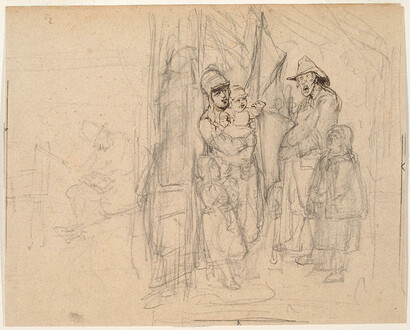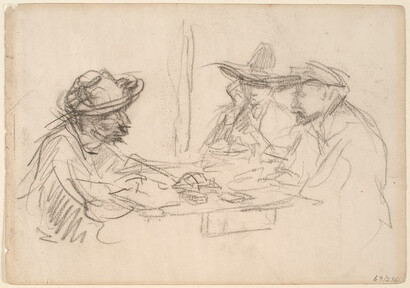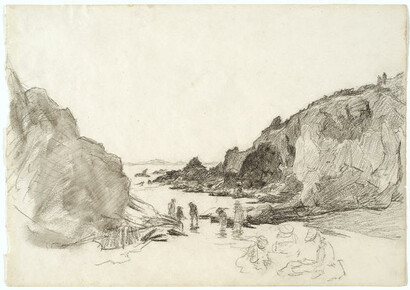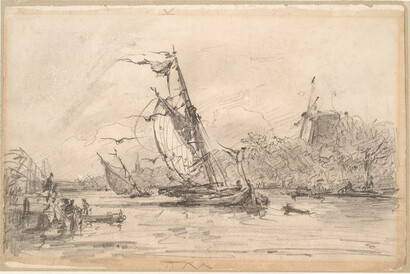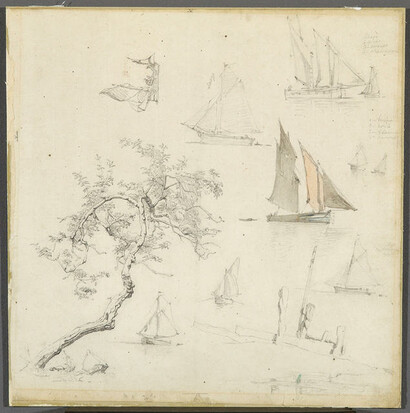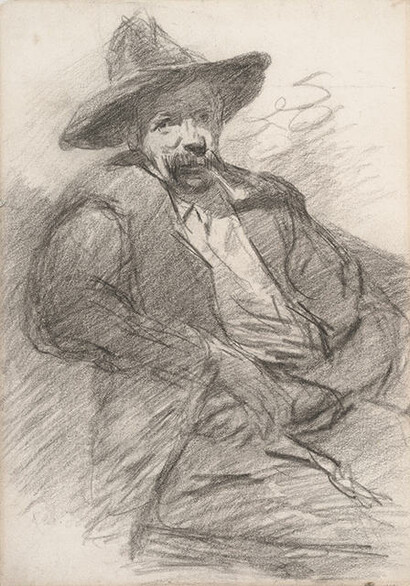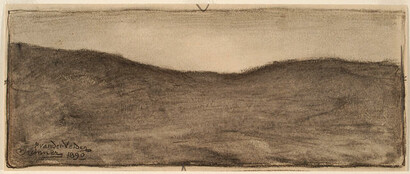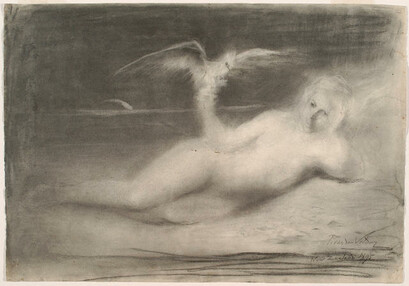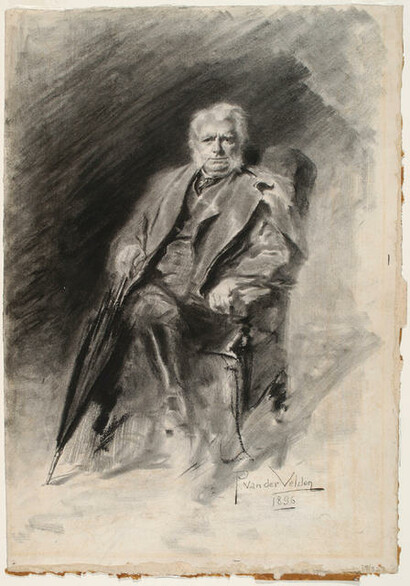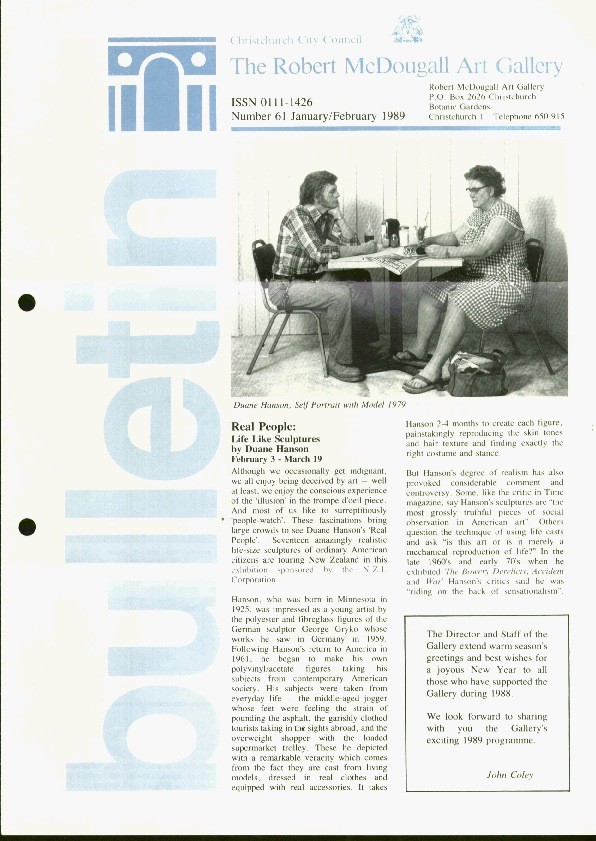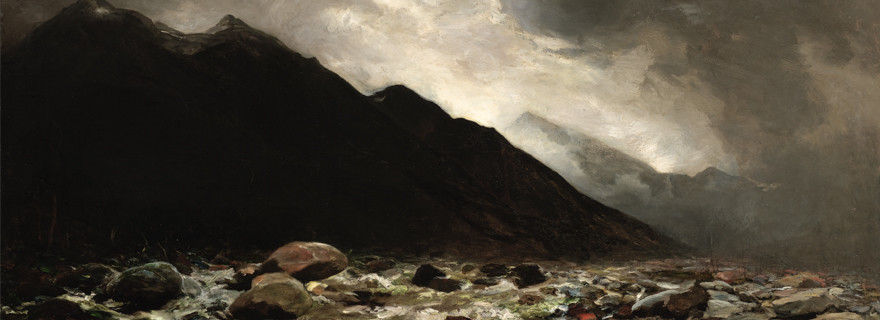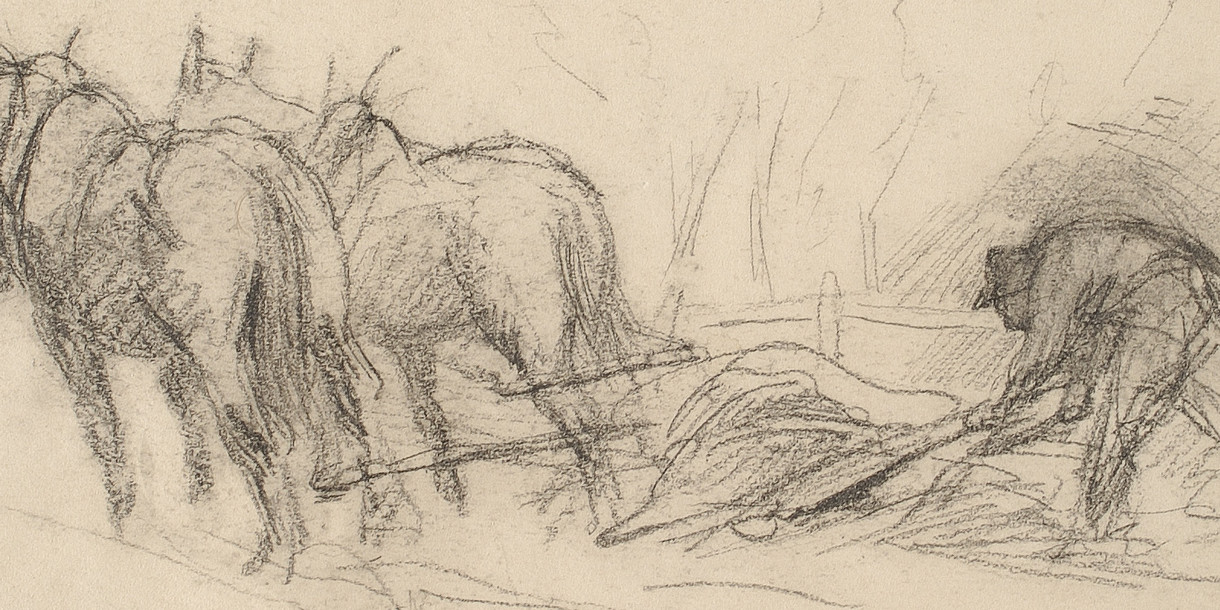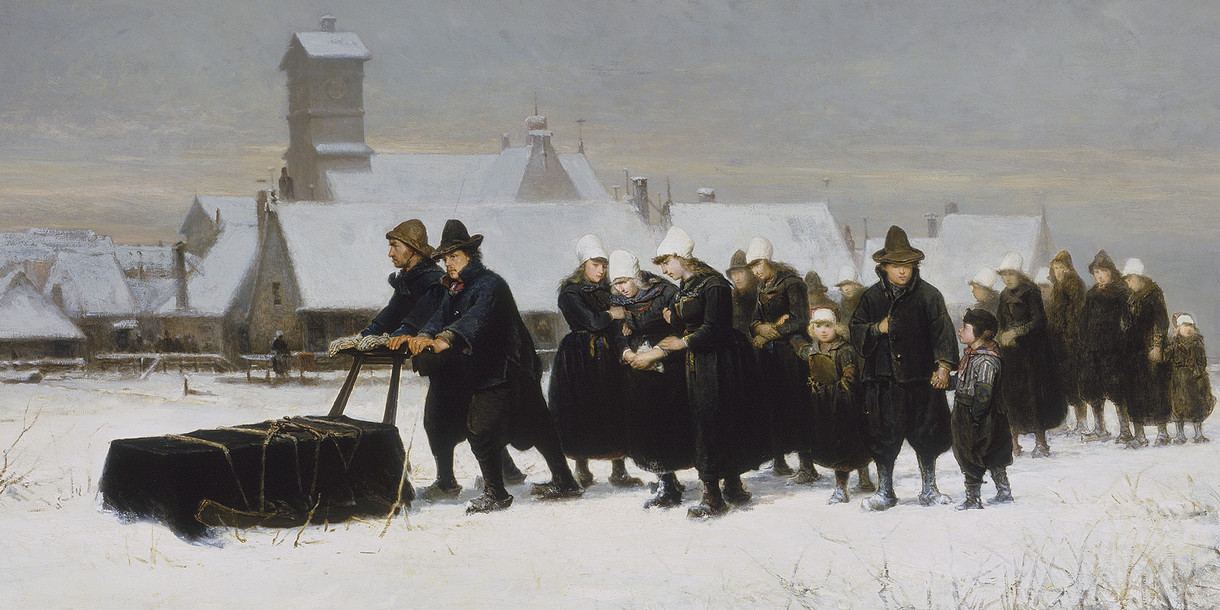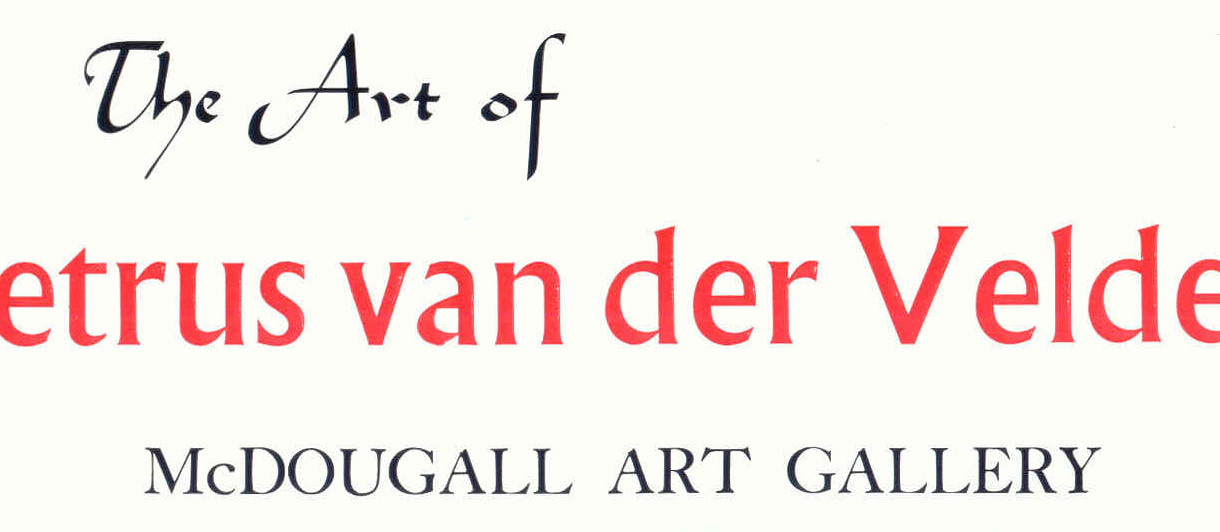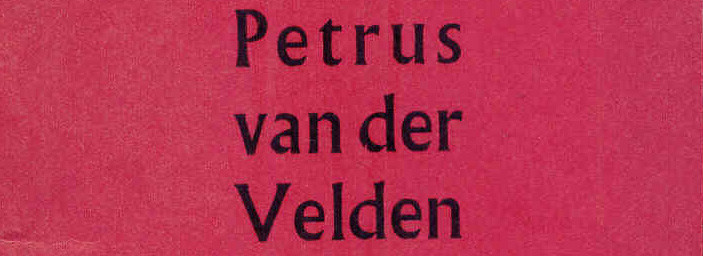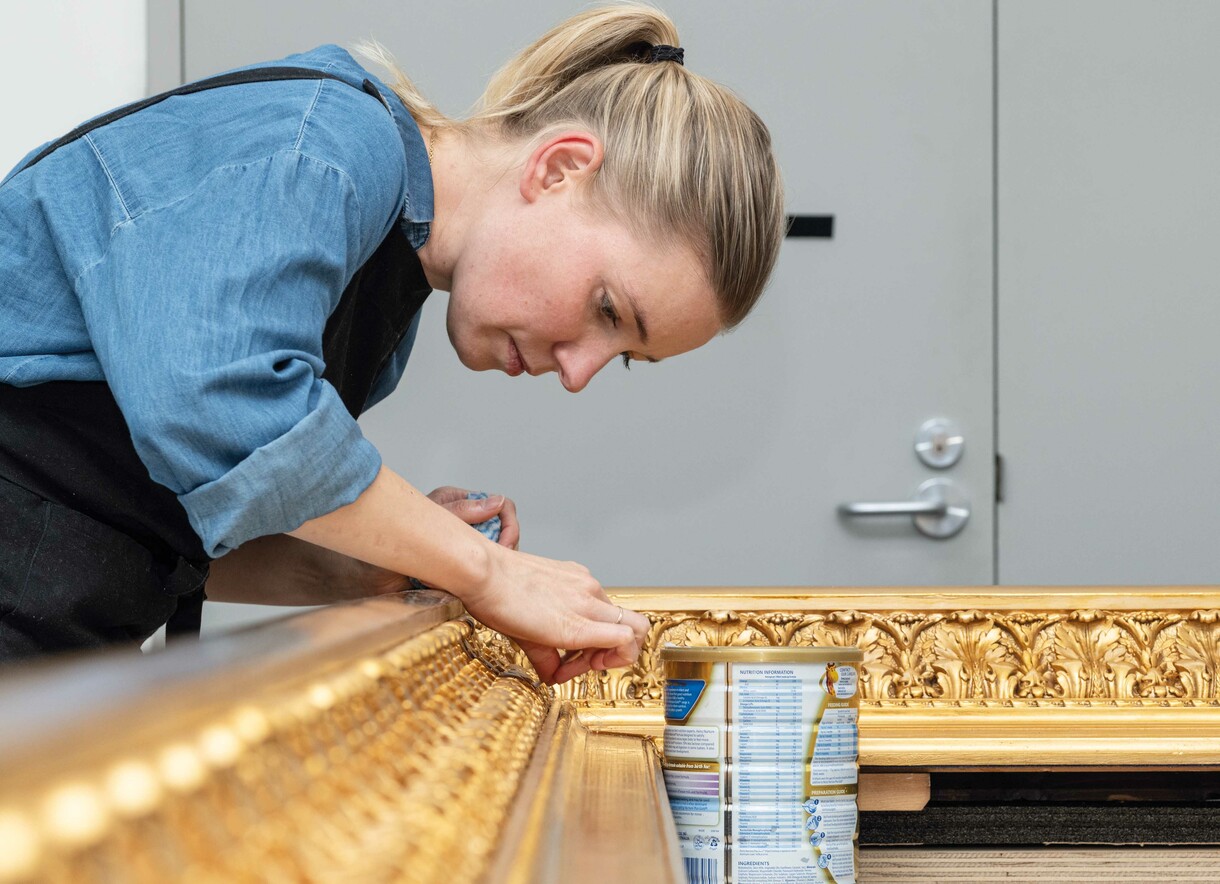This exhibition is now closed
Death and Life: van der Velden's Holland
20 March –
14 May 1989
This exhibition is the first of several for 1989 which are based on works selected from the Gallery's collections, augmented by loans from other public and private sources.
It takes as its prime focus, paintings and drawings made by van der Velden between 1870 and 1889. Both years were crucial in his career as an artist, particularly 1889. It was the events of that year which precipated his decision to leave his homeland for Australasia. During April 1890 he sailed on board SS Orizaba from Holland never to return. Behind him he left three decades as a professional artist and a hard won status among his contemporaries in the milieu of Romantic Realists of the Hague School. Ahead was a bitter sorrowful future and struggle for recognition in a harsh uncultivated land.
Petrus van der Velden did not start painting until the late 1860s. up until that time his concern was as a graphic artist. His decision to gain independence and work as a painter was a luxury that he often paid for dearly, being reduced at times to near poverty. His earliest works in paint were marinescapes and, by 1870, he was well established and recognised as a marine artist. In that year he applied for a King's pension to enable him to continue working and was successful, however one of the conditions was that he worked as an artist on the island of Marken in the Zuider Zee.
The following year he began visiting the island and over the next two years explored the simple life of this peasant fishing community. He also became aware of the ever present forces and fragile balance of life and death. Death continually cast its shadow.
The sea claimed its share of fishermen, almost it would seem in exchange for the fish they caught. Deaths from drowning were common and the drama of such events provided many nineteenth century artists with imagery.
In Holland, the celebrated Romantic realist leader of the Hague School was Jozef Israëls. He was van der Velden's mentor in some respects and had also gained some of his most profound inspiration from a small fishing village. In 1855 he recuperated after an illness at Zandvoort. He lived with a carpenter and studied as van der Velden was to do years later, the simple life of the people around him, their daily work routine both indoors and out on the dune of sea. He noted in his sketch pad unpretentious objects, a cupboard, a clock, and kitchen utensils. He also gathered motifs which were later turned into paintings. Among his favoured motifs were many that van der Velden also adopted, such as girls knitting, children playing, motherhood, old age and death.
The funeral narrative, one of the most poignant in van der Velden's work, was initiated by Israëls. Israëls' first major work on the motif of death was the Shipwrecked Mariner exhibited in Paris in 1861 and London the following year. He also exhibited in Rotterdam in 1862 The Day Before the Funeral. The impact of such works on the younger van der Velden cannot be ignored. In 1872 he also took up the theme of the drowned fisherman which he explored through numerous paintings and drawings.
Van der Velden took up the narrative where Israels left off. The events unfold from the point where the coffin is borne to the church, and continued with the service, the transporting by either barge or sledge, to the place of burial, the burial itself and finally the dispersal of the mourners.
The funeral series of works which symbolised and celebrated the triumph of death over life reached a remarkable level with the painting of the Dutch Funeral Marken in 1872. this painting now in the Gallery's collection is thought to be the same work which van der Velden, guided by Israëls' encouragement, exhibited at his first exhibition in the Hague. So impressed was Israëls that he lauded the work and awarded van der Velden with his personal medallion.
Peasant life in van der Velden's Holland may have been closer to the shadow of death but there were also the ever present forces of life, and peasant life did have its rollicking lighter side recognised by generations from Pieter Bruegel the Elder forward. It could be rousing and boisterous filled with the simple pleasures, music, playing games and drinking. These van der Velden rendered with equal gusto. He had an obvious empathy with his Marken subjects and studies in his sketchbook continued to provide him with a source of imagery long after he had settled in New Zealand. Even though he opted for a self-imposed exile, the links were never broken.
Apart from his paintings of the Otira landscape van der Velden's most important work as an artist was achieved in Holland. What followed merely echoed the successes of works created in the 1870s and 1880s.
('Death and Life: van der Velden's Holland', Bulletin, No.62, March/April 1989, pp.1-2)
Exhibition number: 425
